Log in or create new account to save this product to your wishlist.
The 10 Most Frequently Asked Questions about Grass
We get asked lots of questions about lawns! Find out the answers to the most commonly asked questions!
🌱 All important maintenance moments for your lawn during the year. Leave your email and we will send you the lawn calendar for free.
Enter your email
Receive the lawn calendar in the mail
Enjoy a green lawn all year round!

- Order by 2PM = shipped today
- 200.000+ satisfied customers!
- 60 day satisfaction guarantee
Are you struggling with clover? Maybe moss is overtaking your lawn? Perhaps you want to know when it’s the best time to overseed. We get asked many questions here at MOOWY, so we thought we’d put together a comprehensive piece that answers the most frequently asked questions about lawns.
- Question 1: What can I do about clover?
- Question 2: What can I do about weeds, such as dandelions, buttercups, and creeping ivy?
- Question 3: What can I do about chafer grubs and leatherjackets?
- Question 4: Can I sow grass seed and lay fertiliser simultaneously?
- Question 5: Is it necessary to scarify? And how often?
- Question 6: Which setting should I choose for my spreader?
- Question 7: What’s the best way to overseed?
- Question 8: What’s the best way to reseed your lawn?
- Step 8: Wait!
- Question 9: What’s the best way to combat ants?
- Question 10: Should I spread lime this winter?
So, if you have a burning question about your lawn, read on — you’re sure to find an answer. Otherwise, check out our Help & Advice section — we have an encyclopedia of lawn knowledge to share with you!
Ready? Let’s go!
Question 1: What can I do about clover?
You’ll find clover everywhere: on the roadside, in meadows, and probably in your garden. And while there are some benefits of clover in your lawn, which isn’t a good sign.
The presence of clover suggests a lack of soil nutrients, and poor soil is a welcoming home for moss and weeds, such as clover.
Clover is a good sign that your soil needs fertilising. Clover thrives in soil low in nitrogen, while grass does much better in soil rich in nitrogen. So, you can see where we’re going here.
How to remove clover from your lawn
It’s essential to tackle the roots of the clover plants, not just the leafy section of the plants you see above the ground.
You can remove clover in your borders with a hoe, ensuring you get down into the roots. If clover is growing between the cracks in your patio tiles, use a scraper or a gas burner to destroy the plants.
However, if you have clover in your lawn, you should scarify. This will rip up the weeds as you remove the moss and the upper leaves of your grass plants, and then use a high-nitrogen fertiliser, such as MOOWY’s All-Round Fertiliser, making your soil less hospitable to low-nitrogen loving weeds.
Check out our expert’s guide to removing clover from your lawn for more details.
Question 2: What can I do about weeds, such as dandelions, buttercups, and creeping ivy?
Weeds are an eyesore, so we’ll explain how to eliminate dandelions, buttercups, and creeping ivy.
Dandelions
Dandelions have cheerful yellow heads and lots of Christmas tree-shaped leaves. While being edible and actually rather good for you, they can be a pain once they establish on your lawn.
And they spread — at the end of the season, the flower head turns to white fluff that gets lifted by the wind and spread across the garden. So, while they’re good for the bees and other pollinators, they’re not so great for your turf.
Remove dandelions before they bloom by pulling the roots out of the ground — it’s the only way you’ll kill them. Alternatively, choose a type of grass with a coarser structure, such as MOOWY’s Sport & Fun lawn seed.
Buttercups
OK — so buttercups are super-cute, and their presence might seem quite innocent, but they multiply in moist soil at breakneck speed. And they’ll smother your other plants.
So, act fast if you want to get rid of a buttercup invasion (that’s an excellent name for a band, actually, isn’t it!).
Remove single buttercups by hand, loosening the soil and pulling the roots up. If you have a field full, however, mow your lawn swiftly to remove the blooms.
Also, it’s helpful to know that buttercups thrive in compacted soil, so scarify and aerate your lawn to make it less hospitable to these invasive weeds.
Creeping ivy
Creeping ivy turns purple in spring, depriving your lawn of water and oxygen and causing it to die. And creeping ivy is particularly susceptive to fungal infections, which endangers your lawn and your bedding plants.
Remove the plants from the roots shortly after they bloom (between April and July) to prevent them from going to seed.
Question 3: What can I do about chafer grubs and leatherjackets?
Chafer grubs are the larvae of scarab beetles, and leatherjackets are the larvae of the crane fly. And both can wreak havoc on your lawn.
These grubs feed on your turf’s roots, causing round patches of yellow, dying grass. They live underground, feeding on the roots, pulling the plant down into the ground.
If you notice that you’re getting lots of birds pecking at your lawn in the early evening, you’ve probably got a grub infestation.
How to fight chafer grubs and leatherjackets
Control these hungry grubs with nematodes, which will devour the grubs and then die off once the food source has disappeared. Keep the soil moist – the nematodes will do their thing.
Avoid chafer grubs and leatherjackets
Grubs are helpful for your garden’s biodiversity, but you can prevent them by planting strongly scented plants and herbs in your garden, such as lemongrass and garlic. These will deter the crane fly and beetle population as they seek a place to lay their eggs.
Question 4: Can I sow grass seed and lay fertiliser simultaneously?
Yes. In fact, we recommend that you fertilise your turf as soon as you’ve sown your new grass seed. Use a fertiliser designed for a young lawn, such as MOOWY’s Lawn Starter, which contains phosphorus, promoting healthy and deep roots.
Sowing and fertilising can be done in quick succession but leave plenty of time between fertilising and spreading lime — at least 3-4 weeks. Fertiliser and lime don’t combine well — the nitrogen and calcium bond and cancel out their benefits.
Question 5: Is it necessary to scarify? And how often?
Your grass needs space to thrive, but if your lawn has been invaded by moss, rotting organic matter, or weeds, it will grow slowly and become weak. Moss, combined with the felt layer of organic matter, will suffocate your lawn’s roots, so you need to get rid of it before it damages your grass plants.
Scarifying removes the top surface of felt and moss. And while you’ll think you’ve destroyed your lawn immediately after scarifying, you’ll see the benefits within three weeks as your grass plants bounce back, stronger and more vibrantly than ever.
Scarify once or twice a year, giving your grass plants room to thrive.
We have several articles about scarifying — read them here.
Question 6: Which setting should I choose for my spreader?
A spreader is a handy tool to help sow grass seed and spread fertiliser or lime. But how do you set it up? Use the wrong settings, and you won’t get the best results.
For example, too much fertiliser can dry your lawn and scorch your grass. But provide too little, and the grass won’t reach its desired level of health and beauty.
Try a test area first — say 2 square metres and a spreader width of 50cm, using 25g per square metre. Therefore, use 50g for 2m². Set the spread rate to the middle position, and start walking. If the spreader width is 50cm wide, it will be empty after 4 metres. Lower the spreader quantity if it’s empty before you’ve completed 4 metres. On the other hand, if the spreader isn’t empty after 4m, set the spreader quantity to a higher level.
Check out our articles about fertilising your lawn for some expert tips.
Question 7: What’s the best way to overseed?
Overseeding is laying lawn seed over an existing lawn. It’s a good idea to overseed at least once a year because a young lawn produces a thicker and healthier turf.
When you overseed, you sow half the quantity of seed you would for a new lawn. Check out our expert’s guide to overseeding for more information.
Question 8: What’s the best way to reseed your lawn?
Overseeding and reseeding are often necessary when your lawn becomes patchy and bare. Never leave bare spots across your lawn, or weeds and moss will happily take root!
Here’s how to reseed your lawn:
Step 1: Choose your lawn seed and calculate your quantities
There are lots of different types of lawn seeds, which produce different results. Check out our lawn seed page, and choose a variety that suits your requirements.
We recommend using 17g per square metre when overseeding — double that for a new lawn.
-
Sports & Fun Grass Seed
 Delivered tomorrow13.99
Delivered tomorrow13.99- Order by 2PM = shipped today
- 200.000+ satisfied customers!
- 60 day satisfaction guarantee
-
Quick Repair Grass Seed
 Delivered tomorrow12.99
Delivered tomorrow12.99- Order by 2PM = shipped today
- 200.000+ satisfied customers!
- 60 day satisfaction guarantee
-
Shade & Sun Grass Seed
 Delivered tomorrow9.99
Delivered tomorrow9.99- Order by 2PM = shipped today
- 200.000+ satisfied customers!
- 60 day satisfaction guarantee
Step 2: Mow before you reseed
Mow your existing lawn to 2-3cm. This will help you identify the bald spots — these are the areas to concentrate on when you resow.
Step 3: Improve the soil
Improve your soil by scarifying, aerating, and fertilising if you haven’t already carried out these tasks.
Step 4: Reseed
It’s time to sow. Ensure the temperature is above 10℃ and below 25℃ and the soil is moist.
Spread the seed evenly across the soil, using a spreader or by hand. Sow the seed lengthwise first, then repeat and sow widthwise to ensure you don’t leave gaps.
Step 5: Rake in the seed
Make sure the seed makes complete soil contact; otherwise, it won’t germinate. Rake the grass seed to ensure even spread, then use a roller to press it into the moist soil, preventing it from washing away.
Step 6: Fertilise your lawn
Choose a good quality fertiliser, such as MOOWY’s Lawn Starter. This will help boost the soil’s nutrients, giving your seed the best possible chance to thrive.
Step 7: Water your lawn
Water your lawn with a sprinkler if you can — this provides a gentle sprinkle of water that shouldn’t wash the seed away. It’s better to water a little four times a day than one extensive soaking, as that could disturb the seeds.
Step 8: Wait!
Now, give your freshly sown seed time to germinate and grow. Avoid walking on your young grass plants, and give the fresh shoots at least three weeks of growth before the first mowing.
Question 9: What’s the best way to combat ants?
A few ants in your lawn aren’t a significant problem, but a large colony can take over your lawn. So, you might need to tackle the nest.
Dig out the ant nest
Use a spade and carefully dig around the nest to dig it out. Then, dispose of it in a bio bin.
Move the ants’ nest with a flower pot
Fill a flower pot with soil and place it with the open end covering the ant’s nest. Within two weeks, the ants will have expanded the nest into the flowerpot.
Remove the pot and empty it into your garden waste bin or give it to your chickens to eat. They’ll love it.
Remove the queen
Eliminate the entire nest in one fell swoop by removing the queen. Look for the largest ant in the nest and move her to another place in the garden where the ants won’t cause a nuisance.
Fight ants with nematodes
Control ants naturally with the help of parasitic nematodes, which will penetrate the ant larvae and kill them. They also chase adult ants out of their nest with their eggs.
Nematodes are available at various garden centres or can be ordered online.
Fight ants with garlic
Sprinkle garlic powder over the nest, and pour water over it. The smell will scatter the ants and make them forget their way back to their food source. The ants will starve and die.
Fight ants with a bait box
Use a bait box if you can’t find the ant’s nest. Place it on a paved surface close to the ants’ usual walking route. They will walk through the powder in the box and take it into the nest, destroying the colony.
A typical bait box lasts for around a month, which is long enough to kill the colony.
Read more about combatting ants in our in-depth article.
Question 10: Should I spread lime this winter?
Lime helps neutralise your soil’s acidity, so test the pH of your lawn earth with a tester kit. The ideal conditions for your turf are a pH of 5.5 to 6.5. If the pH is lower, sprinkle lime to combat the acidity.
Spread lime in winter because it also helps prevent moss growth. But if there’s already a lot of moss in your lawn, wait until spring to fight it; otherwise, you could do more harm than good.
Lime also ensure that your lawn absorbs soil nutrients, but wait for at least three weeks between liming and fertilising; otherwise, they’ll cancel each other out.
Check out our expert’s guide to killing moss in your lawn.
Do you have any other questions about garden maintenance?
We’ve got hundreds of excellent articles to help you make the most of your lawn and your garden plants. Check our our Help & Advice page, and improve your chances of a beautiful garden!
If you have any questions, get in touch. We’d love to hear from you.
Thanks for reading.
-
A Guide To Pruning Plum Trees: Why, When & HowA complete guide to pruning plum trees. Learn the right pruning techniques to keep your tree healthy and ensure a bountiful harvest.Read more
-
How to Grow & Care for English IvyWith English Ivy scaling the walls, homes get that extra cosy feeling. You can also add more green to your balcony or indoor space by planting ivy in hanging baskets or simple pots. Find out what to look out for when growing and caring for ivy plants in this post.Read more
-
Pruning Ornamental Grasses: Why, When & HowLearn the tricks of the trade with ornamental grass pruning. Find out which ornamental grasses to trim and when is the best time to do it.Read more
-
How to Grow and Care for Blueberries in Your GardenHome-grown blueberries taste the best. That’s at least what everyone who successfully planted blueberries in their own garden says. Most blueberries you can find in the supermarket are either from Peru or grown in hydroponics. So it is not really a surprise that many store-bought blueberries taste watery. Therefore, it’s best to just grow your own blueberries. We tell you how to best go about it.Read more
-
Pruning Strawberries: Why, When & HowPruning strawberries 101: A simple guide to a bountiful harvest. Learn the essential steps for best results.Read more
-
How to Grow & Harvest Garlic: The Complete GuideGarlic, with its numerous health benefits and distinctive flavour, is not only a staple in kitchens worldwide. It’s also an incredibly rewarding plant for you to grow in your garden. Find out now how to best go about it.Read more
-
10 Tips to Identify & Combat Garden PestsDiscover practical and simple tips to get rid of garden pests such as garden bugs, plant pests, and pests on plants. Take charge and reclaim control of your little oasis, ensuring it is free from unwanted garden insects and plant bugs.Read more
-
All You Need to Know about Growing and Caring for Passion FlowerWith their intricate flowers and extravagant stems, passion flowers are a joy to look at. If you want to know how to grow and care for them, you have come to the right post.Read more
Leave a comment
Your answer will be displayed on the site and the interested party will be notified by email.
Leave a comment
Have a question or want to share your experience? Leave us a comment.

- Order by 2PM = shipped today
- 200.000+ satisfied customers!
- 60 day satisfaction guarantee

- Order by 2PM = shipped today
- 200.000+ satisfied customers!
- 60 day satisfaction guarantee

- Order by 2PM = shipped today
- 200.000+ satisfied customers!
- 60 day satisfaction guarantee

🌱 All important maintenance moments for your lawn during the year. Leave your email and we will send you the lawn calendar for free.
Enter your email
Receive the lawn calendar in the mail
Enjoy a green lawn all year round!



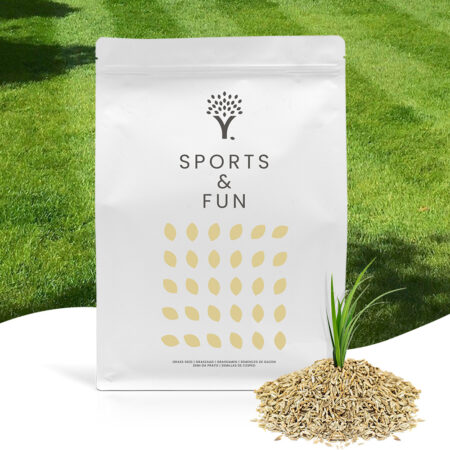



















Comments (0)
There are no comments yet. Well then, what are you waiting for to
Be the first to write your comment!inaugurate this pretty page?
Do you have some comments?